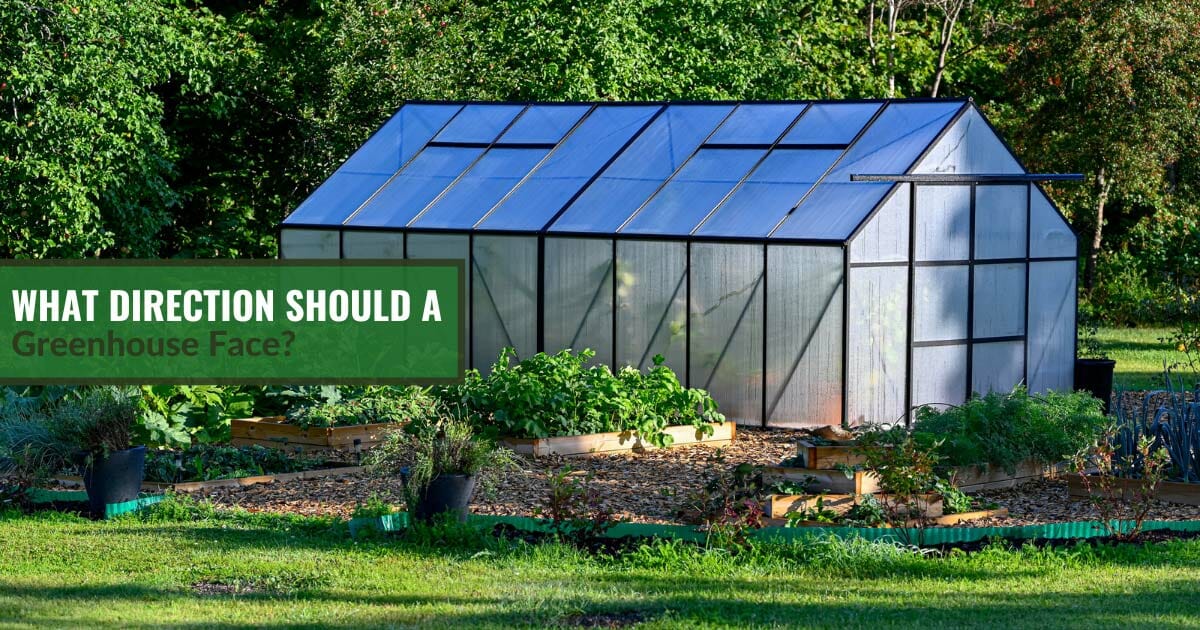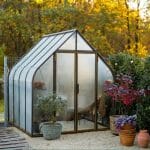
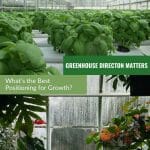
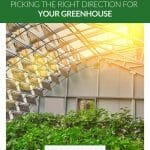

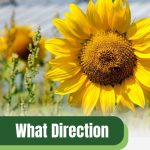
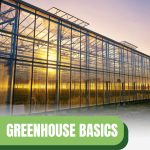
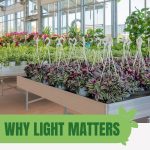
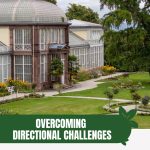

Greenhouse gardening is a rewarding hobby for beginners and experts alike. It’s especially suitable for those with minimal space or weather difficulties, for whom traditional gardening can be challenging. But what direction should a greenhouse face for the best light conditions?
Different plants have different light requirements, but they all need a certain amount of light to thrive. Understanding this most basic element of gardening is essential for making the most of your greenhouse. While the direction is important, it’s not all to consider. Keep reading to find out more.

What this article covers:
- Greenhouse gardening – the basics
- What direction should a greenhouse face?
- Greenhouse direction and where we go from here
Greenhouse gardening – the basics
A greenhouse allows a degree of control over your plants and flowers’ living environment that you simply don’t get with conventional gardening. It’s the obvious solution for overwintering, tending to new seedlings, and also protecting your most sensitive exotic species.
You don’t have to be an expert or have an unlimited budget to take advantage of greenhouse gardening. Sure, you can build a glass greenhouse from scratch if you have the means and the time. But a DIY kit makes it that much easier and more economical – with both your time and your money.
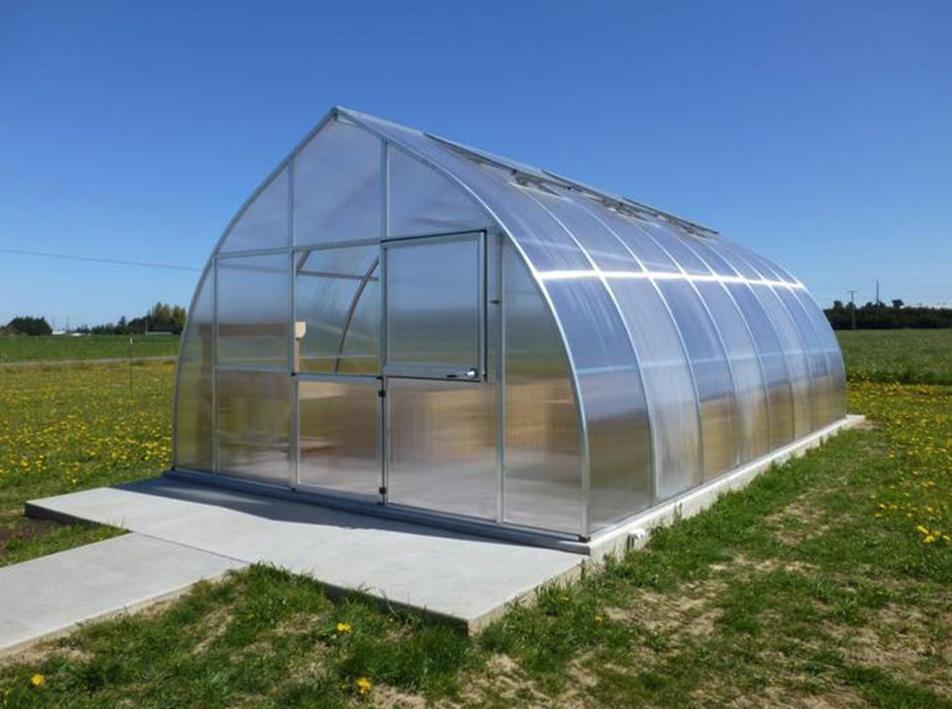
Even beginners can establish a successful greenhouse with a commercial polycarbonate greenhouse kit. It’s easy to install and set up and will meet most of your gardening needs. Our wide selection of DIY kits also offers various greenhouse dimensions to suit the space you have.
But there are some basic principles in greenhouse gardening that no one can afford to overlook.

These are:
- Orientation/Direction
- Light/Shade requirements
- Insulation
- Cooling/Ventilation
- Drainage
And while all five of these factors are important, the direction your greenhouse faces is perhaps the most important. Here’s why.
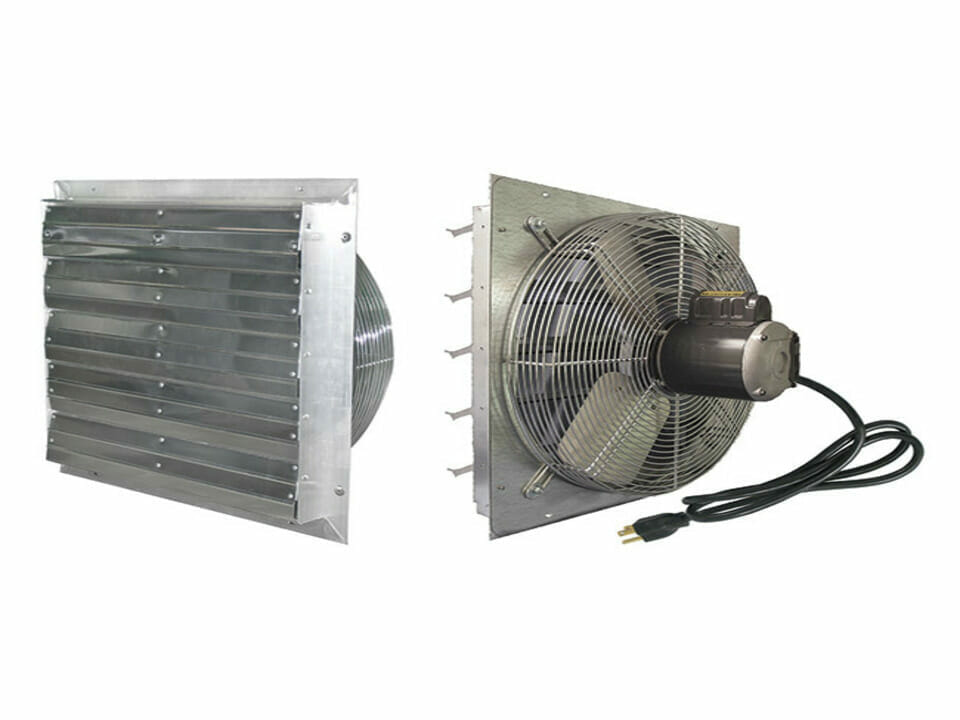
Choosing your greenhouse direction
Choosing your greenhouse direction is more than a matter of aesthetics. It determines the amount of light your plants receive. Yes, it’s true that some plants need less light, and can thrive in shady or low-light conditions, but all plants need some light to grow.
Why is light so crucial?
Plants, algae, and even some bacteria have chlorophyll in their cells. When exposed to light, they undergo the process of photosynthesis, whereby light energy is converted to chemical energy. Photosynthesis is not only essential for life, but it also re-introduces oxygen into the atmosphere.
This process is just as necessary in the confines of a greenhouse. The amount of light your greenhouse receives is vital for a solar greenhouse design, too. That’s because the solar energy production of your solar panels is as reliant on sunlight as photosynthesis is.
Orientation vs direction
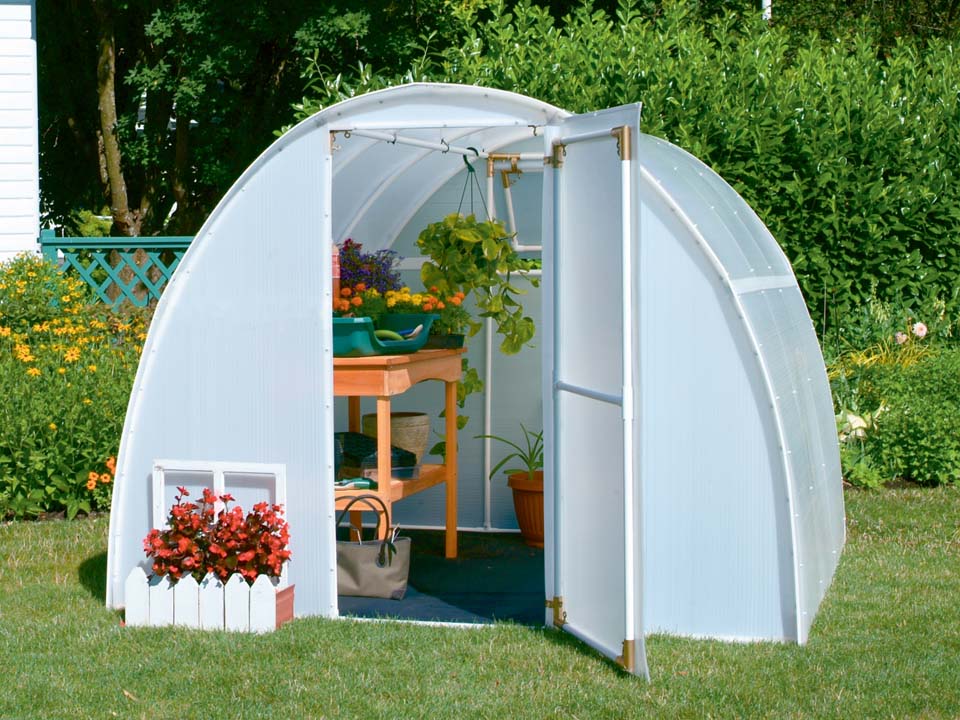
By positioning your greenhouse structure with the side facing the direction with the most light, more of your plants will receive the amount of light energy they need. Of course, this means that the farthest side receives less light, but that’s where your gardening know-how comes in.
You can use this to your advantage by using the shadier parts of your greenhouse to grow partial sun or dappled sun plants, or those that enjoy high humidity.
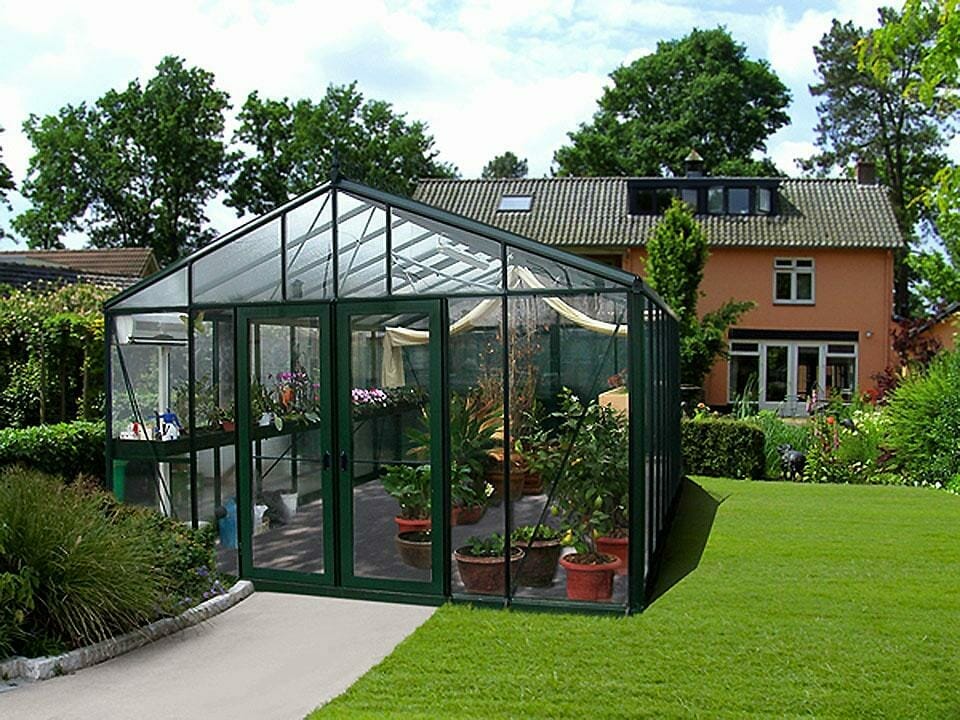
Respect your plants’ light needs
You more than likely have a selection of flowers and plants, all with different needs. Respect your plants’ individual needs. Simply place your plants that need less light, or that can tolerate low light levels, on that farthest side. And put the ones that have higher light needs, on the most southern-facing side.
If you’re thinking of building a DIY aquaponics greenhouse, your fish tanks should be placed on that farthest side. Too much light on your fish is never a good idea. Algae uses photosynthesis to grow too, and algae blooms can slow or entirely stall the cycle of your water system.
What direction should a greenhouse face?
So, what direction should a greenhouse face make the most of natural light? The best direction for a greenhouse isn’t the same for everyone. It’s determined by a wide range of factors, most importantly the hemisphere you’re living in.
Best direction for a greenhouse to face
What’s the best direction for a greenhouse to face in the northern hemisphere?
The northern hemisphere includes North America, Europe, most of Asia, a large part of the African continent, and some of South America. In locations in the northern hemisphere, the sun is always to the south throughout the day.
The further away you are from the equator, the further south the sun is.

Buildings are oriented in a way to maximize this exposure, and this affects all garden structures as well as optimum greenhouse placement. A south-oriented (or southeast if that’s easier for you) greenhouse technically receives more sunlight.
However, it’s not always possible to get a good space of south-facing ground if you live somewhere surrounded by buildings. If you can’t find a south-facing area, try and get a spot that receives good morning sun. This heats up your greenhouse so it’s warm throughout the day and gives your plants enough sun to grow healthily.
In the southern hemisphere, the opposite is true, and the greenhouse should preferably be oriented towards the north. However, it’s not always so simple.
The best greenhouse layout can be influenced by other factors, like your available space, the season, your particular climatic zone, and even the topography.
For example, if your available space doesn’t allow for this type of placement, you may have to be more creative. Similarly, if your greenhouse is oriented towards the south, but the rays of the sun are hindered by a thick grove of trees. Perhaps it’s wintertime, and you’re in an area that has severe winter weather.
What to do when your greenhouse direction isn’t optimal
All is not lost – there are ways to supplement your plants and flowers’ light needs even in the worst of circumstances. Natural light is free, and in most areas it’s abundant, but when it isn’t you can rely on specially designed grow lights.
Grow lights stimulate photosynthesis in plants, just like sunlight does. And they provide the red and blue color spectrums that your flowers need to bloom, and your vegetable needs to grow. Grow lights come in two types – fluorescent and LED, but the latter is more energy efficient.
Grow lights are your savior when you can’t place your greenhouse in the best orientation or facing the best direction for abundant natural light. They also supplement light needs during the shorter, greyer days of winter, and rectify situations where too many surrounding buildings or trees limit natural light.
Greenhouse direction and where we go from here
What direction should a greenhouse face for optimal light conditions? This can differ depending on your location, available space, and even the season.
However, with the right tools, you can make the most of your greenhouse, no matter the direction it faces. Feel free to contact us for more advice and product info.
Did you find this article helpful? We’d love to hear from you and help you out in any way we can. Simply leave us a comment in the section below and we’ll get back to you.

Jesse James
Jesse James, an Army Veteran, now shares his passion for gardening through engaging articles on Greenhouse Emporium. Leveraging his experience and love for nature, Jesse provides practical advice and inspires others on their gardening journey.

